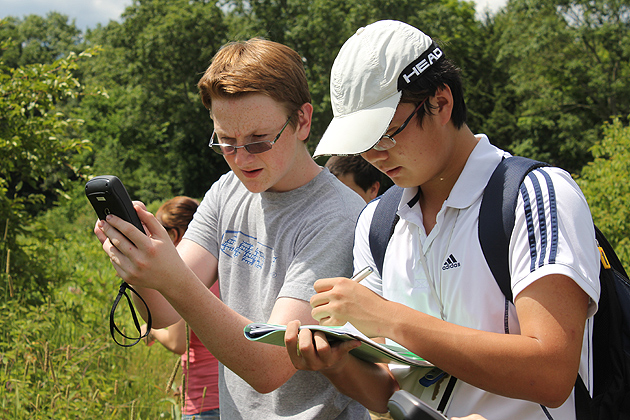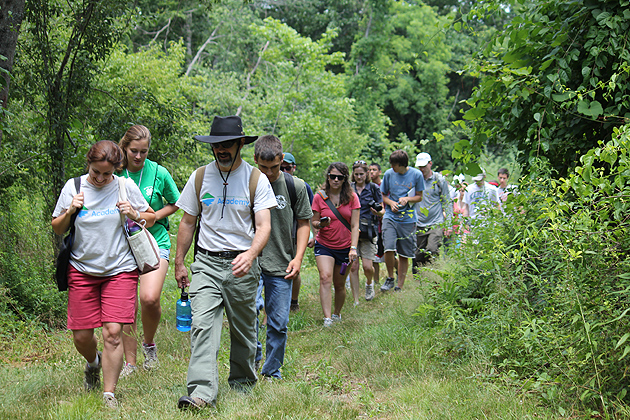
At first glance, the activities at the Natural Resources Conservation Academy looked much like those at any traditional summer camp. There were team-building exercises. A cookout or two. A night spent sleeping under the stars. And then there was the good-natured banter of teenagers getting to know one another. What was not immediately evident was that these Connecticut high school students were just beginning a process that will take them far beyond a week spent in Storrs.
The members of the first Conservation Academy came from 24 different cities and towns across the state. At the conclusion of their week-long field exercises, July 8-13, the students were committed to beginning seven-month-long service projects in their local schools or communities, working on such projects as nature trails and water conservation initiatives. Their experiences will culminate with poster presentations at the Connecticut Conference on Natural Resources to be held on campus in March.
Generous Donor
The Conservation Academy was made possible largely due to the generosity of an anonymous donor who confronted John Volin, professor of plant physiological ecology in the Department of Natural Resources and the Environment, with the question: “If you had $20,000 to $50,000 for the Natural Resources Department for up to 10 years, what would you do with it?”

It was an incredibly intriguing question,” says Volin, “and I proposed an idea which I then discussed with my department, our extension folks, and other people whose expertise I respected, and we developed the Natural Resources Conservation Academy.”
The potential donor was as enthusiastic as Volin and his cohorts about the idea and, working through the University of Connecticut Foundation, has pledged funding for at least the next four years. Depending on the success of the venture, there’s a possibility of extending the contribution for a full 10 years.
Volin observed that a lot of young people today have a disconnect with their natural surroundings, and while a one-week camp in the summer is both fun and challenging, he said, “We also wanted them to continue working on environmental issues once they return to their own communities. That’s what makes this a special program; we’re not just giving kids a one-week program, we’re helping to create lifelong advocates for natural resource protection.”
Creating the Conservation Academy

Program coordinator Charlotte Rand, an extension educator in the Department of National Resources and the Environment, started the process by contacting high schools throughout the state to tell them about the upcoming Conservation Academy. Because space is limited, students were required to submit a letter of recommendation from a teacher along with their application.
She visited 32 high schools to talk about the program. “The reaction was awesome from both teachers and students,” she says. There were 45 applicants and 28 were accepted into the program, with 24 actually enrolled.
”I’m so impressed with this group,” Rand adds. “Not only did they rise to every challenge, they were fun to work with and they were incredibly engaged. Once I returned to the dorm during one of the only breaks [the students] had all day, and they were all in the lobby together doing a mapping exercise they had been given for homework!”
Topics studied during the week included water resource management, forestry, soils, fishes and wildlife, landscape ecology, and habitat protection. Courses focused on applying recently gained knowledge to real-world problems, and reaction from the students, all of whom were high school sophomores or juniors, was uniformly positive.
Comments from tired campers as they headed home included “fun” and “challenging,” as well as, “It couldn’t have been better, I got to try everything!” – which is just what Conservation Academy creators had been hoping for.








